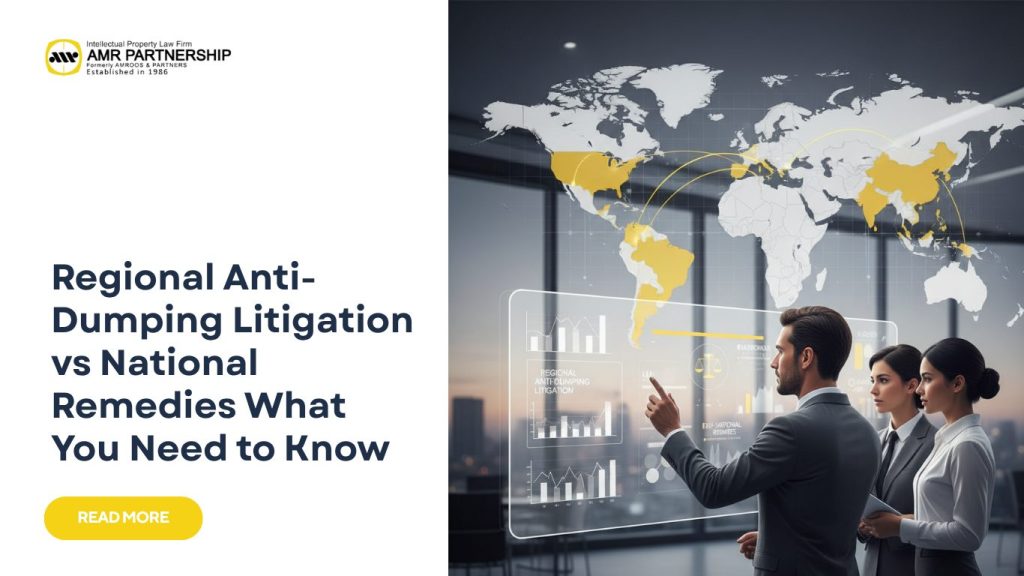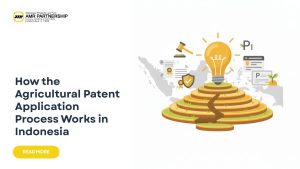
In an increasingly interconnected world, trade disputes have become more complex than ever. Among these challenges, Regional anti-dumping litigation is emerging as a crucial mechanism for balancing fair trade and protecting domestic industries. As markets grow and supply chains span multiple countries, understanding this regional approach—and how it differs from national anti-dumping actions—is essential for exporters, importers, and manufacturers. In this article, we’ll unpack the fundamentals of regional and national anti-dumping litigation, explore current cases in 2025, and share insights on how businesses can navigate this evolving landscape with support from trusted legal experts such as amr.co.id.
READ MORE: Why Your Business Still Needs a Commercial Litigation Lawyer in 2025
What is Dumping and Anti-Dumping Litigation
Dumping occurs when a company exports goods to another country at a price lower than its normal value or domestic market price. This practice can harm industries in the importing country by undercutting local producers and distorting market competition.
To counteract this, countries implement anti-dumping litigation—a legal process designed to investigate, prove, and penalize unfair pricing practices. Typically, anti-dumping measures follow these steps:
- Filing of a complaint by domestic producers or industry associations
- Investigation by a competent authority (e.g., a trade ministry or commission)
- Determination of dumping margin (the price difference)
- Imposition of anti-dumping duties or corrective actions
According to WTO rules, each member nation has the right to investigate and impose anti-dumping measures if dumping causes material injury to its domestic industry. As highlighted by global trade analysts (tilleke.com), this mechanism ensures that international competition remains fair while preventing predatory pricing strategies.
However, as global production chains grow more intertwined—particularly in regions like ASEAN or the EU—the traditional, single-country approach is becoming less effective. This is where Regional anti-dumping litigation steps in.
READ MORE: Smart Ways to Prevent Contract Litigation in Your Projects
National vs Regional, What Sets Them Apart
National anti-dumping litigation is conducted by an individual country under its domestic laws. For instance, if Country A identifies that imported steel from Country B is sold below market price, its trade authority can initiate an investigation and impose anti-dumping duties on imports from Country B.
By contrast, Regional anti-dumping litigation takes place when multiple countries or a regional bloc act collectively to address dumping. This could involve a supranational institution (like the European Commission) or coordinated actions among member states.
Here are the main differences:
- Scope: National litigation focuses on protecting a single domestic market, while regional litigation covers multiple economies under a shared framework.
- Coordination: Regional actions often involve joint investigation teams, shared data, and unified rulings.
- Complexity: Regional cases require harmonization of legal standards, procedures, and economic impact assessments.
- Strategic Impact: Regional measures are often more influential because they prevent exporters from rerouting goods to nearby markets to avoid national restrictions.
For exporters and manufacturers, understanding these distinctions is critical. A company may comply with one country’s pricing laws but still face challenges if the same practice violates regional rules. Legal professionals specializing in trade law—like those at amr.co.id—help businesses prepare documentation, assess risk exposure, and respond effectively to both national and regional investigations.
READ MORE: Your Shield Against Bad-Faith Lawsuits: 24/7 Litigation Consultation
Why Regional Litigation Matters More in 2025
The year 2025 has seen a noticeable uptick in anti-dumping disputes that span across borders. Global supply chains, especially in Asia and Europe, are tightly interlinked, making it difficult to isolate dumping activities within one country.
Recent reports from the Carnegie Endowment (2025) highlight ASEAN’s growing concern over the influx of low-cost goods from China. The issue is no longer limited to one country—it’s affecting multiple Southeast Asian markets simultaneously.
A key example occurred on April 22, 2025, when the U.S. Department of Commerce (DOC) issued final determinations on crystalline silicon photovoltaic cells imported from Cambodia, Malaysia, Thailand, and Vietnam (trade.gov). While the case was initiated by the U.S., it revealed how interconnected regional supply chains can blur national boundaries in trade enforcement.
Similarly, the European Commission launched an anti-dumping investigation on May 21, 2025, targeting imports of light vehicle tires from China (policy.trade.ec.europa.eu). This case underscores how regional blocs act as a single legal entity when protecting their shared markets.
Meanwhile, ASEAN Briefing (2025) observed that transshipment practices—where goods are rerouted through neighboring countries to avoid tariffs—are becoming more common. This trend reinforces the necessity for regional cooperation in anti-dumping enforcement.
The implications are clear, trade measures are no longer confined by national borders. Regional cooperation offers a more holistic response to global market distortions, ensuring fair competition across integrated economies.
READ MORE: Navigating International Contract Litigation with Confidence
Key Cases of 2025 and Their Lessons
Several notable cases in 2025 demonstrate how regional dimensions of trade are shaping anti-dumping litigation worldwide.
1. The Solar Panel Case (April 2025)
The U.S. Department of Commerce determined that imports of solar cells from Cambodia, Malaysia, Thailand, and Vietnam were sold below fair value. While the investigation was U.S.-based, it highlighted how regional supply chains can be intertwined, with production stages spread across multiple ASEAN countries. (Source: trade.gov)
2. The EU Tire Investigation (May 2025)
The European Commission opened an inquiry into the alleged dumping of light vehicle tires from China. As a regional bloc, the EU collectively investigates and imposes measures, showing how supranational institutions handle dumping cases that impact multiple member states. (Source: policy.trade.ec.europa.eu)
3. ASEAN’s Growing Import Concerns (October 2025)
An Economist report in October 2025 highlighted how Southeast Asia faces a surge of low-cost Chinese imports, prompting some governments to consider coordinated trade defenses. While ASEAN lacks a formal regional anti-dumping body, this trend suggests a future shift toward collective enforcement. (Source: economist.com)
Each case underscores a shared theme: the boundaries between national and regional trade defenses are fading. For businesses, this means that compliance must be reviewed not just at the national level but also through a broader, regional lens.
READ MORE: When Manufacturing Contract Litigation Becomes Unavoidable?
Challenges and Opportunities for Businesses and Legal Advisors
Navigating anti-dumping litigation across multiple jurisdictions poses unique challenges. Here’s what businesses should keep in mind:
Common Challenges
- Legal fragmentation, different countries have varying legal procedures and evidentiary requirements.
- Rules of origin verification, determining where goods are “truly” made can be difficult when components are sourced across borders.
- Risk of Circumvention, exporters may face accusations of rerouting goods through third countries to evade duties.
- Coordination gaps, regional cases require synchronized policy responses, which can be slowed by differing national interests.
Strategic Opportunities
- Comprehensive compliance, legal experts can help develop documentation systems and pricing structures that align with both national and regional standards.
- Early Risk Assessment, monitoring global trade trends and investigating potential vulnerabilities before they escalate.
- Cross-border Strategy, working with legal counsel to craft multi-jurisdictional defense strategies.
Firms with deep experience in international trade and IP law, like amr.co.id, are well-equipped to help companies prepare documentation, analyze risks, and represent clients in complex cross-border proceedings. Their expertise extends to WTO compliance, trade investigations, and customs enforcement.
While pricing for legal advisory services can vary depending on case complexity, businesses can request a preliminary consultation via WhatsApp or Instagram for guidance and a transparent cost overview before proceeding further.
READ MORE: How Competition Litigation Shapes the Fight Against Predatory Pricing
Implications for Indonesia and Beyond
Indonesia, as both an exporter and importer within the ASEAN network, stands at the crossroads of regional trade policies. With growing interdependence among Southeast Asian economies, Indonesian industries must stay vigilant in monitoring regional developments.
For local businesses:
- Exporters should ensure that their pricing strategies align with international fair trade rules to avoid potential anti-dumping claims.
- Importers need to stay updated on regional anti-dumping measures that may impact supply chain costs.
- Policy makers can benefit from closer collaboration with ASEAN counterparts to establish coordinated trade enforcement mechanisms.
Legal consultation becomes vital here. A proactive approach, backed by professional trade advisors, helps reduce legal risks and ensures smooth operations across markets.
If your company is currently navigating a complex trade issue or anticipates involvement in Regional anti-dumping litigation, consulting with an experienced law firm can make all the difference. You can explore customized solutions and legal insights tailored to your industry at amr.co.id.
For more details—including consultation rates and tailored assistance—you can reach out directly via WhatsApp or Instagram. The firm’s team will provide a personalized assessment based on your trade needs and documentation requirements.
In a world where markets are increasingly interconnected, Regional anti-dumping litigation is not just a policy trend—it’s a reality shaping global commerce. Understanding its mechanisms today will empower your business to stay compliant, competitive, and well-protected in 2025 and beyond.
- Phone (Hunting): +62-21-29036668
- Fax: +62-21-29036672 to 75
- WhatsApp Customer Service: Click here to chat
- Instagram: @amrpartnership
- TikTok: @amr.partnership
- Facebook: Law Firm AMR Partnership
- Official Website: www.amr.co.id






